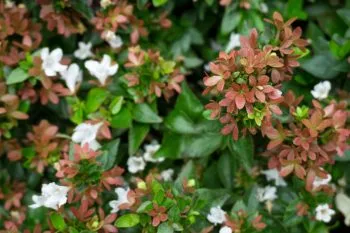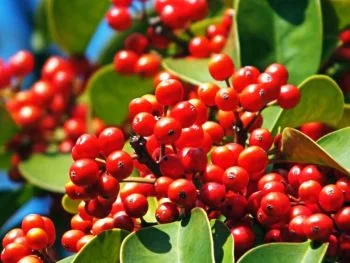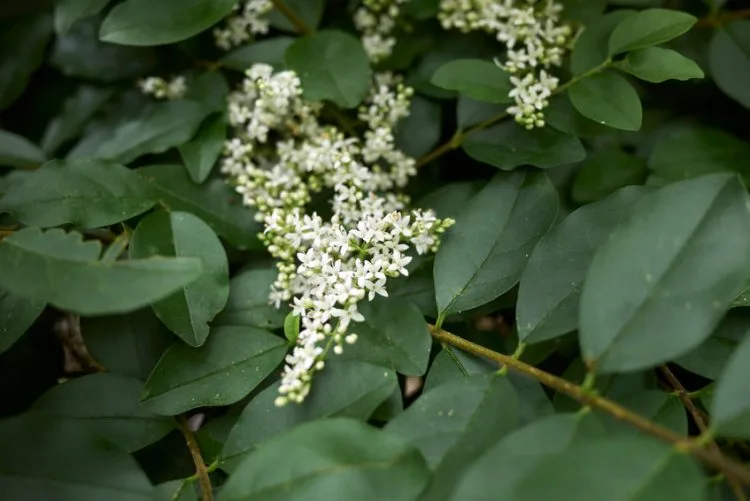
Evergreens are known for their hardiness in all types of climates and soil conditions. But that doesn’t mean they never risk becoming deficient of vital nutrients to stay healthy.
Out in the wild, this is taken care of automatically, as the organic debris that gathers on a forest bed will decompose and fortify the soil. But in a well-kept yard that is mown, pruned, and cleaned out regularly, this natural process is stripped bare.
This is where we have to step in, as attentive and caring homeowners, to ensure that we are supplementing the nutrients and minerals our plants and trees need to thrive.
Why Choose an Evergreen Shrub?
Evergreens are exceedingly popular as shrubs due to their hardiness and the fact that they quite literally stay green year-round. They’re easy to prune, they produce almost no debris, and there is a surprising variety to choose from.
If you tend to think of a pine tree or a juniper when you hear the term “evergreen,” we are happy to tell you that there are so many more!
A few popular evergreen shrubs you may not know about:
- Glossy Abelia
- Wax-Leaf Privet
- Yaupon Holly
- Japanese Boxwood
We often think of shrubs as rather short, such as those used in a 3-4 foot high hedge along the edge of a house or the perimeter of someone’s yard. The truth is, many are allowed to grow quite tall and can serve as a full-height fence in some regions of the world.
Of course, the size of your shrubbery will factor into what level of care it needs. Let’s take a look at a few other factors to consider.
Signs of Trouble
How do you know if your evergreen shrubs are in poor health? Here are the 3 major signs, only to be reconsidered if your shrub is newly planted and still adjusted:
- Poor color. That’s right, evergreens should be green. If you see a yellow or brown tinge in a well-established plant, it’s missing something.
- Lack of flowering/lack of berries. Of course not all evergreens produce fruit or blooms. But if you have one that does and it isn’t producing, something is amiss.
- Poor/slow growth. You can only determine this if you know the median growth rate of your particular type, but if it seems sub-par, there is a deficiency to be addressed.
Learn More About Evergreen Shrubs that Flower
What Do They Need?
An evergreen’s basic mineral and nutrient needs are not so very different from those of most other plants and grasses that are hardy to the North Texas region. However, there are some particulars that cannot be overlooked if you want your shrubs to thrive.
RELATED TIP: Best Evergreen Shrubs for Texas
Potassium, nitrogen, phosphorus, sulfur, and calcium are the minerals evergreens can only get from the soil. Fortunately, most North Texas soil is pretty nitrogen-rich. Additionally, most common fertilizer blends have varying ratios of nitrogen, phosphorus, and potassium.
However, that isn’t the only thing to consider. The soil must also be the correct pH for the specific shrub type. If it is too alkaline or too acidic, this can hamper the roots’ ability to adequately take in needed minerals.
This is similar, in fact, to how the human body works. For instance, you can eat all the vitamins and minerals you want. But if your diet does not include any healthy fats or oils whatsoever, your body will struggle to absorb them.
Even in nitrogen-rich soil, such as what we have in our north Texas region, there is an added risk in the fact that our soil can also be rich in clay. Clay can make nutrient absorption more difficult for the root system. This means that you need to continue monitoring the warning signs listed above, and re-test your soil if your shrubs begin looking unhealthy.
So before you run out and grab a bag of fertilizer, contact your local lawn care professionals to run a soil test. That way, you can give your shrubs the right amount of what they really need.
Visit our Fertilization and Weed Control service page to learn how Evergreen can help out!
How Do I Apply it, and When?
All plant life cycles through an active growing season, and then a spell of relative dormancy. Evergreens do not go fully dormant in the winter, but the rate of absorption of both water and minerals will slow down a bit. This is why it’s important to not only know how, but when, when it comes to effective fertilization.
First off, select the fertilizer that has the correct ratio based on your shrubs’ needs. This will appear something like, “10:8:8” or the like. The order is typically nitrogen, phosphorus, and potassium.
For the North Texas climate, spring and fall are the best times to fertilize in general. Intense summer heat can have a poor reaction to the chemicals, resulting in burns among the grass and topsoil.
RELATED TIP: Top Shade Loving Shrubs for North Texas
Fertilizing too late in the season can not only be a waste of product, it can also create unwanted consequences. In frigid temperatures, they simply won’t absorb all the nutrients when their active growth is over. Conversely, fertilizing at the very end of the active season but before it gets too cold, can spur a growth spurt that isn’t ideal for winter.
Late autumn is a time of slowing down, and winter is a time of rest. A growth spell too late in the season can knock this rhythm off-balance, making it harder for the plant to sustain the new growth through the winter.
A general rule of thumb is that the soil temperature needs to be above 55 degrees Fahrenheit for any fertilization to work effectively. Keep in mind that the soil temperature is often below the air temperature, so use a garden thermometer that posts into the ground.
If you have mulch around the base of your shrubs, there is no need to remove it. Just like you would do with un-mulched ground, apply the fertilizer directly to the surface and then water generously. The granules will soak through the mulch as they begin to break down, ultimately soaking into the topsoil.
You can also bury the soil in a series of shallow holes. Some actually consider this method more effective, though it is notably more labor-intensive.
Set the holes about 2 feet apart around the base of the shrub, or along the trunks of the hedge. They should be about 18 inches from the trunk(s), around 2 inches across, and roughly 8-12 inches deep.
Place the fertilizer in the holes, following the product guidelines for amount used per square foot. No need to cover the holes; just be sure you water adequately once you’re done.
Liquid fertilizer is an easy and effective method as well, but it tends not to be as cost-effective as using granules. This is especially true for sandy or poorly drained soil.
Final Thoughts

Keep in mind that fertilizing your evergreen shrubs is not strictly necessary, but is an effective method of addressing deficiencies. Many only need water and sun, but signs of distress are a tell-tale sign that you need a soil test.
If all of this sounds like a bit much to keep up with, reach out to Evergreen Lawn and Landscape, and our professionals will happily keep your shrubs, garden, and lawn perfectly healthy all throughout the year.



Comments (0)
Thanks for your comment!
Thanks for your feedback! Your comments have been successfully submitted! Please note, all comments require admin approval prior to display.
Error submitting comment!
There is a problem with your comment, please see below and try again.